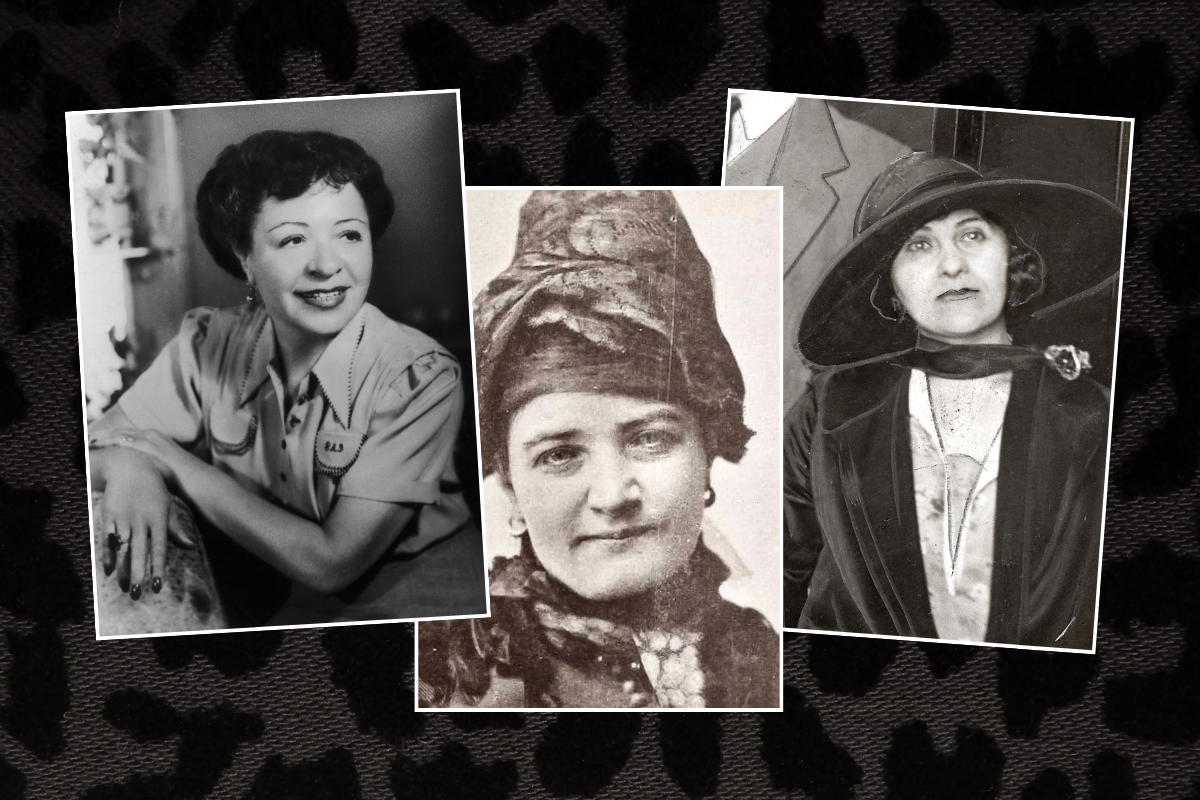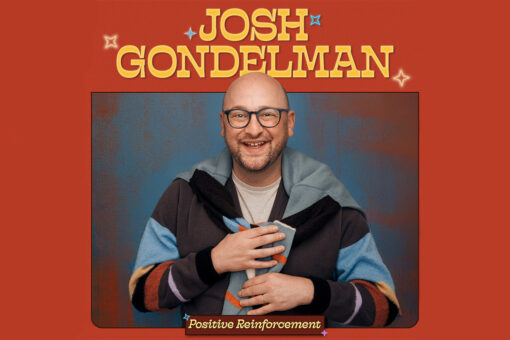From leopard print and dark sunglasses, to the refined elegance of historical figures, the “mob wife” aesthetic, and its chic Jewish side, are most definitely having a moment. And why not? After years of aesthetic minimalism, and a pandemic that saw everyone spending years in athleisure, the glimmer and glamour of the underworld have an appeal that’s easy to see — sparkling, even.
But it’s 2024. And while it can be fun to doll yourself up a la mob wife, we Jewish women know that there’s no reason to relegate yourself to a supporting role. Jewish women have always had a role in the world of business — and that includes the “it’s nothing personal, it’s just business” sort of business.
In short, while there have definitely been Jewish mob wives, Jewish women have also been unafraid to take the lead on the darker, more direct side of organized crime.
In fact, some of the earliest organized crime kingpins (queenpins?) in the United States were Jewish women. Fredericka “Marm” Mandelbaum immigrated to the United States from Germany with her husband Wolfe in 1850 and almost immediately set up shop as a fence for stolen goods, with a variety of small businesses as fronts, living a real-life, Jewish version of “Gangs of New York,” complete with a rivalry with another gang — the Grady Gang.
Marm Mandelbaum would eventually become one of the most powerful crime bosses in post-Civil War New York, taking on fellow Jewish women gangsters “Black” Lena Kleinschmidt and Sophie Lyons as protégés, and instructing them in pickpocketing, fraud and high society hosting. Mandelbaum threw some of the grandest dinner parties in New York, attracting high society to her guest list even as she opened Marm’s Grand Street School, a literal school for aspiring pickpockets and confidence tricksters.
Jewish women gangsters would continue to thrive into the 20th century — and not just in the United States. Prohibition in the 1930s brought with it opportunity for enterprising Canadian bootleggers looking to smuggle liquor to the speakeasies to the south, and chief among their number was Bessie Starkman. Starkman, a Polish immigrant whose family settled in Toronto, was once a Nice Jewish Girl, married at 18, living with three children and keeping a traditional Orthodox home. She found the life expected of her so stifling that she ran out on her husband, Harry Tobin, to take up with the gangster Rocco Perri, whose romantic relationship with Starkman would run rocky. But their businesses, between her head for figures and his underworld connections, would prosper — specifically, running brothels and running liquor from Quebec into the rest of Canada (specifically the “dry” provinces) and the United States.
Unlike Marm Mandelbaum, who lived out her later years in quiet retirement, Starkman died a bootlegger’s death when she was assassinated by a hit man hired by a rival crime family. Her life and death were cinematic enough that there’s currently a movie in the works about her exploits — but she wasn’t the only Jewish woman with a dramatic flair to turn to organized crime in the interwar years.
For the glamour of the underworld, it’s hard to beat Polly Adler. Adler, who originally hailed from a modest village in what is now Belarus, moved to the United States with her family as a teenager, and her initial fall from “respectable” society was not of her own choosing — she found herself ostracized from her family in Brooklyn after becoming pregnant from an assault by her employer and securing a then-illegal abortion.
On her own, Adler fell in with Manhattan theater society, and through her connections to Broadway’s underbelly, began working as a brothel madam. She would eventually become the owner and operator of The Majestic — the most glamorous brothel in New York, with an in-house mahjong parlor, Tutankhamun-themed bar and clientele that included Desi Arnaz and Robert Benchley, with Dorothy Parker occasionally stopping by for a drink and a chat alongside the latter. A businesswoman at her core, Adler retired from the bordello trade after World War II and would eventually become a bestselling author after writing her memoir, “A House is Not a Home.”
While it may seem like the only two options for a Jewish girl gangster to finish her career were retirement or a violent end, there was a third option — switching sides. It was this choice that was made by Arlyne Brickman, whose history reads as a kind of Jewish-girl “Goodfellas.” Brickman was maybe an original devotee of the “Jewish mob wife” aesthetic — as a child, she admired Virginia Hill, Bugsy Siegel’s girlfriend. Starting as a teenager, she was an errand girl and drug runner for the Italian mafia — until she was assaulted and found that her mafia friends wouldn’t help a Jewish woman, no matter her connections.
Between this incident and threats made against her own teenage daughter, Brickman had had enough. She contacted the FBI and became an informant, wearing a wire, providing information for over a decade and testifying against the Colombo crime family, eventually helping with convictions. Despite the danger facing high-profile informants, Brickman refused witness protection, believing it would put her in more danger. This appears to have been the right choice; Brickman never faced physical attacks for her work, and eventually became a minor celebrity, even striking up a brief friendship with Madonna.
While organized crime may seem like a strange thing to champion equal opportunity in, looking at the lives of Jewish women gangsters, common threads emerge. These women were criminals, yes, but they also suffered hardships, including sexual violence, poverty and the challenges that face immigrants in a new country. Is it so shocking that they did what they did? We can look at their lives in fascination, but also with understanding. And maybe that’s part of the cultural fascination that gangsters, both Jewish and gentile, men and women, frumpy and “mob wife aesthetic,” hold for us all. We disapprove of their crimes, but at the same time, we see the ways they got there, and how they reflect our larger world — warts and all.



